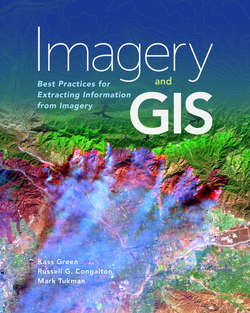Читать книгу Imagery and GIS - Kass Green - Страница 72
На сайте Литреса книга снята с продажи.
Imagery Sources Overview
ОглавлениеSources of imagery are globally distributed, highly varied, and often confusing and challenging to navigate or understand. This section reviews the major sources of both archival imagery and new imagery collects. The following sections provide more detailed information about imagery sources, organized by spectral resolution.
In general, the major civilian sources of imagery for analysis or visualization are either public agencies or private companies from whom imagery is both served and can be downloaded. There are many sources of imagery worldwide. The following list of airborne and satellite sources is not exhaustive but includes the most prominent sources. Table 4.1 summarizes and compares the sources by spatial resolution, spectral resolution, and availability. For comprehensive information about earth observing satellites, three websites offer up-to-date and detailed information:
http://database.eohandbook.com/. The Committee on Earth Observation Satellites Earth Observation (EO) Handbook and Database provides a detailed database on all civilian government earth observing satellites, past and present, which is searchable by agency, missions, and instruments.
https://directory.eoportal.org/web/eoportal/home. The European Space Agency’s (ESA) EO Portal provides a directory of past and planned satellite nonclassified missions from 1959 to 2020, categorized by space agency and from A to Z. It also includes a directory of 40 government scientific airborne flight campaigns.
http://space.skyrocket.de/. Known as Gunter’s Space Page, the website has information about all civilian satellites in orbit, not just earth observing satellites, and is searchable by nation and type.
